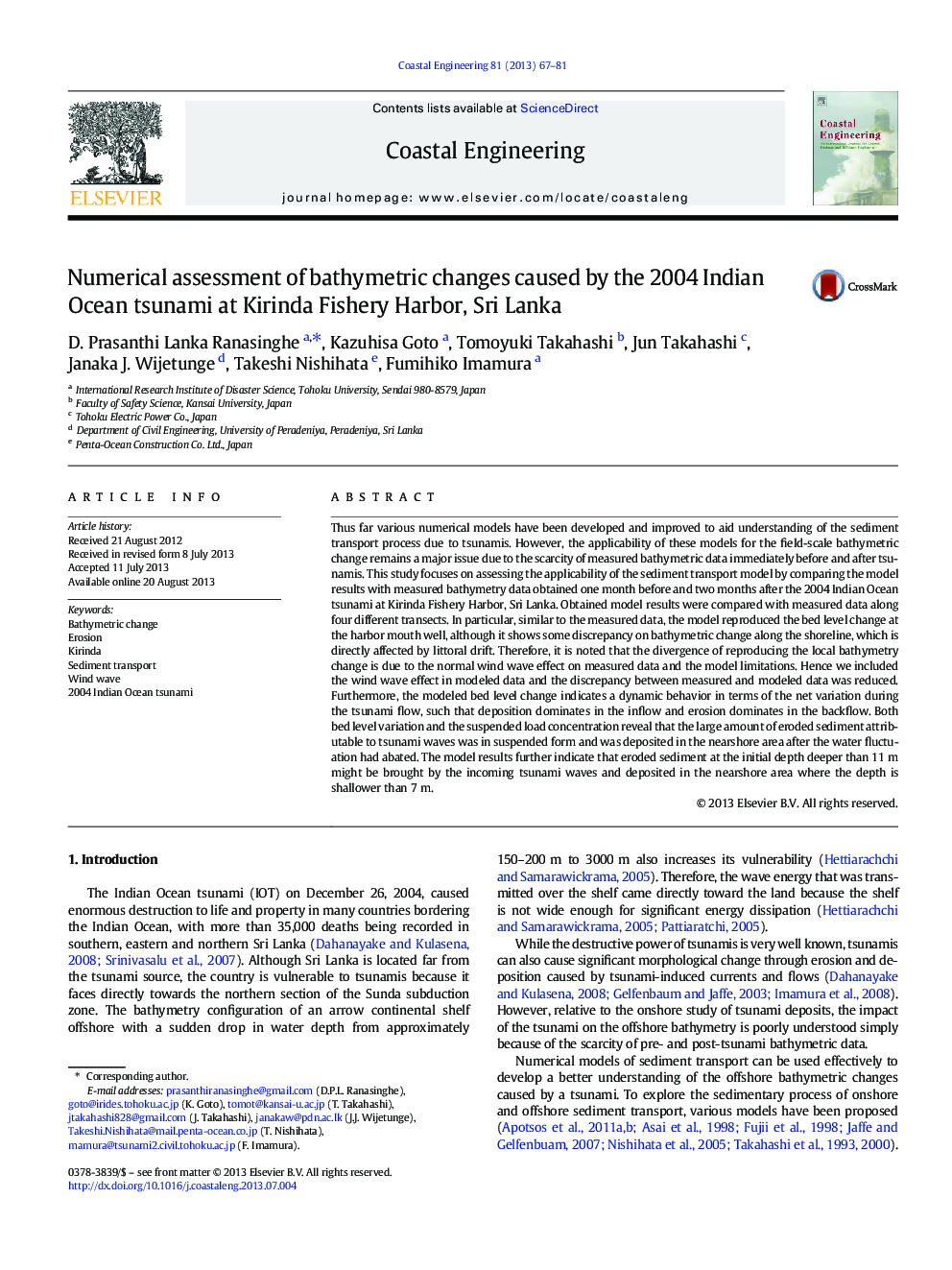| کد مقاله | کد نشریه | سال انتشار | مقاله انگلیسی | نسخه تمام متن |
|---|---|---|---|---|
| 8059890 | 1520373 | 2013 | 15 صفحه PDF | دانلود رایگان |
عنوان انگلیسی مقاله ISI
Numerical assessment of bathymetric changes caused by the 2004 Indian Ocean tsunami at Kirinda Fishery Harbor, Sri Lanka
ترجمه فارسی عنوان
ارزیابی عددی تغییرات بتمتری ناشی از سونامی اقیانوس هند در سال 2004 در بندر شیلر کریندا، سریلانکا
دانلود مقاله + سفارش ترجمه
دانلود مقاله ISI انگلیسی
رایگان برای ایرانیان
کلمات کلیدی
تغییر بتومتریک، فرسایش، کریندا، حمل و نقل رسوب، موج باد، 2004 سونامی اقیانوس هند،
موضوعات مرتبط
مهندسی و علوم پایه
سایر رشته های مهندسی
مهندسی دریا (اقیانوس)
چکیده انگلیسی
Thus far various numerical models have been developed and improved to aid understanding of the sediment transport process due to tsunamis. However, the applicability of these models for the field-scale bathymetric change remains a major issue due to the scarcity of measured bathymetric data immediately before and after tsunamis. This study focuses on assessing the applicability of the sediment transport model by comparing the model results with measured bathymetry data obtained one month before and two months after the 2004 Indian Ocean tsunami at Kirinda Fishery Harbor, Sri Lanka. Obtained model results were compared with measured data along four different transects. In particular, similar to the measured data, the model reproduced the bed level change at the harbor mouth well, although it shows some discrepancy on bathymetric change along the shoreline, which is directly affected by littoral drift. Therefore, it is noted that the divergence of reproducing the local bathymetry change is due to the normal wind wave effect on measured data and the model limitations. Hence we included the wind wave effect in modeled data and the discrepancy between measured and modeled data was reduced. Furthermore, the modeled bed level change indicates a dynamic behavior in terms of the net variation during the tsunami flow, such that deposition dominates in the inflow and erosion dominates in the backflow. Both bed level variation and the suspended load concentration reveal that the large amount of eroded sediment attributable to tsunami waves was in suspended form and was deposited in the nearshore area after the water fluctuation had abated. The model results further indicate that eroded sediment at the initial depth deeper than 11Â m might be brought by the incoming tsunami waves and deposited in the nearshore area where the depth is shallower than 7Â m.
ناشر
Database: Elsevier - ScienceDirect (ساینس دایرکت)
Journal: Coastal Engineering - Volume 81, November 2013, Pages 67-81
Journal: Coastal Engineering - Volume 81, November 2013, Pages 67-81
نویسندگان
D. Prasanthi Lanka Ranasinghe, Kazuhisa Goto, Tomoyuki Takahashi, Jun Takahashi, Janaka J. Wijetunge, Takeshi Nishihata, Fumihiko Imamura,
